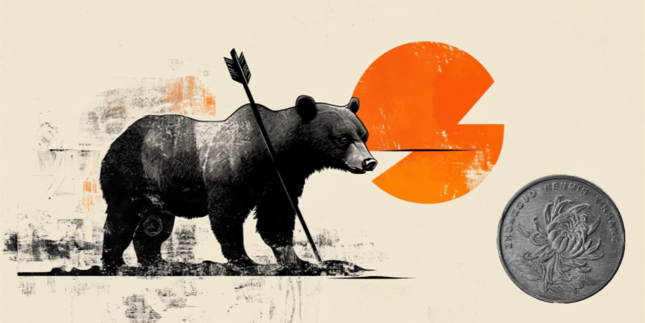Sentiment in financial markets has hit its lowest point in more than five years. The Fear and Greed Index fell to 4 on Friday and fell to just 3 at the start of trading in the new week. In recent history, only a return of the index above 10 was the first early signal of a rebound in growth. We consider a move out of the extreme fear zone, i.e., above the 25 level, to be a more reliable indicator.
Today's index levels are the lows since the end of March 2020, when covid lockdowns stormed markets. Back then, the index's period of single-digit levels lasted from 5 to 23 March. The result was a drop of more than 30% in the S&P 500.
Even earlier, in late 2018, the market’s sharp recovery began just before fear levels rose into double digits—similar to the sell-off in August 2015. However, a return to such fear levels typically occurs near the index’s lowest points.
It is important not to rush and to wait for at least the first signs of a reversal in sentiment. Fluctuations at low, single-digit levels may not last long, but markets can fall painfully deep during this time.
For longer-term investors, a more reliable indicator is a recovery from extreme fear, i.e. a rise in the indicator above 25. Very often, this is followed by a long recovery, and buying near the bottom gives a good return-to-risk ratio.
However, a more reliable and timelier signal is a change in politicians' rhetoric. The Fed's actions primarily helped the markets. So many are hoping for a quick or even immediate change ‘right now’. In the current circumstances, this could well be a change in Trump's narrative or that of other leaders.
Trade Responsibly. CFDs and Spread Betting are complex instruments and come with a high risk of losing money rapidly due to leverage. 77.37% of retail investor accounts lose money when trading CFDs and Spread Betting with this provider. The Analysts' opinions are for informational purposes only and should not be considered as a recommendation or trading advice.
Recommended Content
Editors’ Picks

AUD/USD edges higher above 0.6350 ahead of PBoC rate decision
The AUD/USD pair trades in positive territory around 0.6380 during the Asian session on Monday, bolstered by the weaker US Dollar. Traders await the developments surrounding the United States and China trade discussions, while tensions between the two largest economies are intensifying.

USD/JPY slides further below mid-141.00s, fresh low since September 2024
USD/JPY drops to a fresh seven-month low, below mid-141.00s at the start of a new week as trade-related uncertainties and geopolitical risks continue to drive flows towards the JPY. The divergent BoJ-Fed expectations further exert pressure on the pair amid a bearish USD and thin liquidity during the Easter Monday holiday.

Gold climbs to near $3,350 on uncertainty about Trump's tariff policies
Gold price drifts higher to near $3,350 during the early Asian session on Monday after facing some profit-taking due to the long weekend. Uncertainty about US President Donald Trump's tariff policies and persistent geopolitical tensions continue to underpin the precious metal.

The Monetary Sentinel: The PBoC and the BI expected to hit the “pause” button Premium
With a quiet calendar on policy moves, both the People’s Bank of China and Bank Indonesia are poised to sit tight in prudent mode, waiting for greater clarity on the trade‑war horizon before pulling any trigger on rates.

Future-proofing portfolios: A playbook for tariff and recession risks
It does seem like we will be talking tariffs for a while. And if tariffs stay — in some shape or form — even after negotiations, we’ll likely be talking about recession too. Higher input costs, persistent inflation, and tighter monetary policy are already weighing on global growth.

The Best brokers to trade EUR/USD
SPONSORED Discover the top brokers for trading EUR/USD in 2025. Our list features brokers with competitive spreads, fast execution, and powerful platforms. Whether you're a beginner or an expert, find the right partner to navigate the dynamic Forex market.